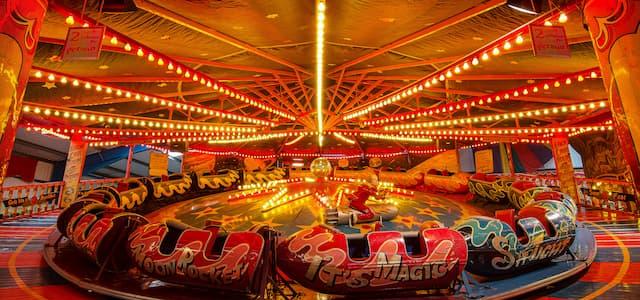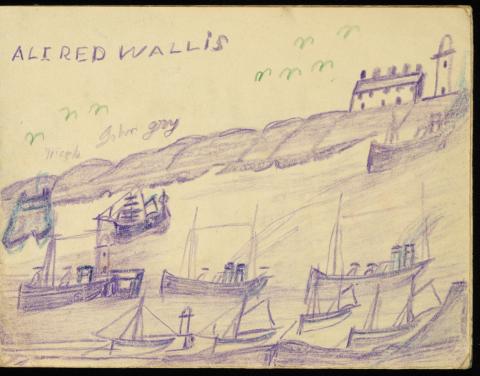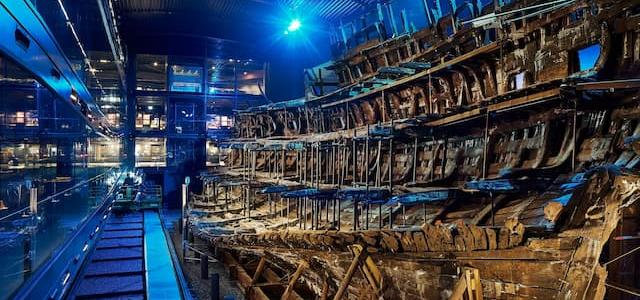
NHMF supports acquisition of significant Alfred Wallis sketchbooks
Thanks to support of over £370,000 from the National Heritage Memorial Fund, Kettle’s Yard, University of Cambridge and Tate have jointly acquired three important and rare sketchbooks by the self-taught artist and mariner Alfred Wallis (1855-1942).

Most of Alfred Wallis’ works are difficult to date, but these sketchbooks are exceptions to the rule. They were definitively produced during the last year of his life, which he spent in a workhouse near Penzance, Cornwall, due to illness and poverty.
At the workhouse, called the Madron Institute, Wallis didn’t have access to his usual artistic materials of marine ship paints, off-cuts of cardboard and wood, and jugs and trays. Instead he became reliant on sketchbooks, pencils, crayons and enamel paints supplied by fellow artists Ben Nicolson and Adrian Stokes.
Seen again after 50 years
The contents of the newly-acquired sketchbooks include religious subjects, suggesting Wallis’ increasing awareness of his own mortality. They are displayed in the exhibition ‘Alfred Wallis Rediscovered’ at Kettle’s Yard (until 20 June 2021), the first time that they have been exhibited for over 50 years. Little has been known about them or researched prior to this.
[Wallis] turned to painting in his 70s as a means of escaping his feelings of isolation and loneliness following the death of his wife.
The sketchbooks have been digitised in order to enable viewing of all of their pages through film and online.
Dr Simon Thurley CBE, Chair of the National Heritage Memorial Fund, said, “We at the National Heritage Memorial Fund are delighted to support the acquisition of these charming and important sketchbooks, which illustrate the last year of Wallis’ life and artistic output. We are also pleased that thanks to the digitisation of the pages, Alfred Wallis’ paintings are now available for everyone to explore online."
Alfred Wallis
Wallis lived most of his life in Cornwall, working on deep-sea fishing boats and as a marine scrap merchant. He had no formal artistic training, having turned to painting in his 70s as a means of escaping his feelings of isolation and loneliness following the death of his wife.
Wallis worked mostly from memory, playing with proportions and perspective, and painting on scraps of board with a reduced colour palette. His drawings and paintings capture his experiences of the sea, depicting fishing vessels and local Cornish landscapes in an expressive style.
Kettle's Yard connection
Kettle’s Yard's founder, Jim Ede, was one of Wallis’ principal patrons. He regularly bought work by the artist and was instrumental in cementing his reputation after his death.
The two men corresponded regularly between 1929 and 1938, building a close friendship through letters, and during those nine years Ede amassed over 120 paintings by Wallis. As a result, Kettle’s Yard has the most substantial institutional holding of work by Wallis anywhere in the world, 35 of which are on permanent display in the Kettle’s Yard House.

